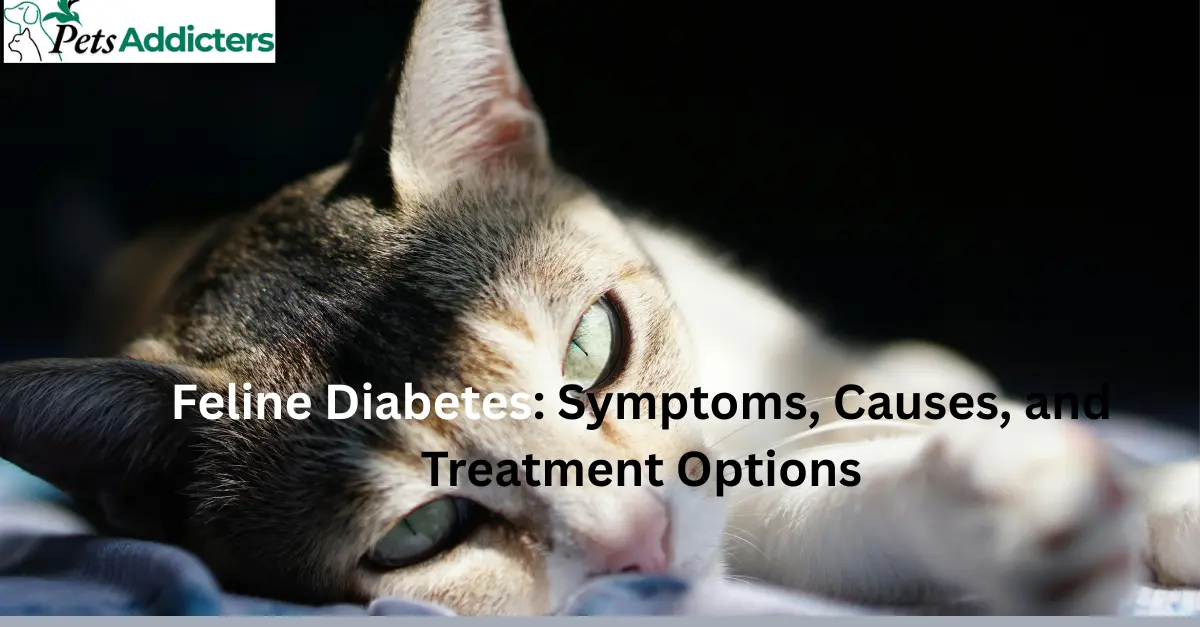Diabetes is not just a disease of humans cats can develop it also. Feline diabetes is becoming more common in middle-aged and older cats. Feline diabetes alters the process of how your cat’s body metabolizes sugar (glucose) to supply energy, and if left untreated, can lead to serious health issues. Here’s the good news with proper care, most diabetic cats can enjoy healthy, happy lives.
In this guide, we’ll discover more about the symptoms, causes, and feline diabetes treatment so that you can care for your pet more effectively.
What Is Feline Diabetes?
Feline diabetes is when your cat’s body is unable to produce sufficient insulin (the hormone responsible for regulating blood sugar) or can’t effectively use the insulin it produces. Without insulin, blood sugar accumulates rather than being utilized for energy, leaving your cat weak and ill.
Symptoms of Diabetes in Cats
- Early is best. Be on the lookout for these of the most common signs:
- Increased thirst and urination – Your cat will be visiting the litter box more frequently.
- Unexplained weight loss –
- Increased appetite – Some cats appear to be hungrier than normal.
- Lethargy – A diabetic cat will be sluggish and less active.
- Poor quality of coat – The coat may become dull, dry, or matted.
- Weak hind legs – Also known as diabetic neuropathy, which makes jumping difficult.
- If you observe a number of these signs, inform your veterinarian right away.
Causes of Feline Diabetes
- A number of things raise the risk of diabetes in cats, such as:
- Obesity – Obese cats are more prone to insulin-resistance.
- Age – Middle-aged and older cats are more at risk of developing diabetes.
- Diet – Diets with high carbohydrate content may lead to blood sugar imbalance.
- Breed – Burmese cats, for instance, are more likely to exhibit susceptibility.
- Physical inactivity – Sedentary life leads to weight gain and insulin problems.
Treatment of Feline Diabetes
- Insulin Therapy
Insulin shots are necessary daily for most diabetic cats to regulate blood glucose. Your veterinarian will provide you with guidance on how to give them safely at home.
- Dietary Management
Low-carbohydrate, protein-rich diets keep glucose in check. Prescription diets for diabetic cats are usually advised.
- Weight Control
Keeping your cat healthy and a normal weight with food and low-key physical exercise is the single most significant factor in diabetes management.
- Monitoring
Regular blood glucose testing or home monitoring to monitor improvement might be suggested by your vet.
- Lifestyle Changes
Stress-free life, feeding regularity, and regular veterinary schedules all contribute to diabetes management.
Can Feline Diabetes Be Cured?
Even though there is no cure, certain cats can return to diabetic remission under proper therapy, particularly when treated early. It indicates that they no longer require insulin but can yet follow strict diet and lifestyle control.
Final Thoughts
Cat diabetes is a treatable but fatal condition. If you catch the symptoms early, work with your veterinarian, and make the necessary lifestyle adjustments, you can provide your cat with its best opportunity to live many long, healthy years.
Your cat is counting on you and with proper treatment, diabetes doesn’t need to cut short their years or their joy.
What are the first signs of feline diabetes?
The first signs include excessive thirst, frequent urination, weight loss despite a good appetite, and lethargy.
How is feline diabetes diagnosed?
Vets diagnose feline diabetes through blood tests, urine analysis, and by reviewing your cat’s symptoms.
Can feline diabetes be cured?
There’s no permanent cure, but some cats can go into remission with early diagnosis, insulin therapy, and dietary changes.
What is the best food for cats with diabetes?
A high-protein, low-carbohydrate diet is usually recommended. Prescription diabetic cat food can also help regulate blood sugar.

